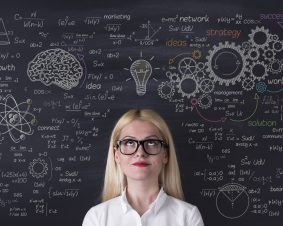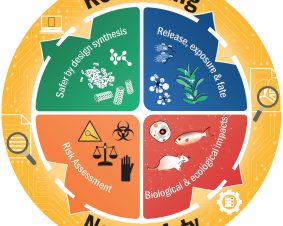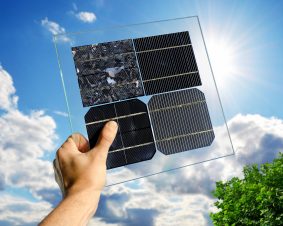 >
Spotlight May 2021: Towards safe and sustainable innovation in nanotechnology: State-of-play for smart nanomaterials
>
Spotlight May 2021: Towards safe and sustainable innovation in nanotechnology: State-of-play for smart nanomaterials
The European Commission’s new Action Plan for a Circular Economy Green Deal, the new European Industrial Strategy as well as the Chemicals Strategy for Sustainability presented in October 2020 are ambitious plans to achieve a sustainable, fair and inclusive economy in the European Union. These strategies require that any new material or product must not only be functional and cost-efficient, but also safe and sustainable.
Nanotechnology is one of the technologies that could enable such green growth. This paper focuses on nanomaterials that actively respond to external stimuli, so-called “smart nanomaterials”. They are part of the broader category of “advanced materials”. It shows that smart nanomaterials and related products may pose new challenges for safety and sustainability assessment due to their complexity and dynamic behaviour. Innovators, scientists and authorities are called upon to further develop and promote the concept of “Safe and Sustainable-by-Design” in nanotechnology.
Original publication:
Gottardo, S., et al., Towards safe and sustainable innovation in nanotechnology: State-of-play for smart nanomaterials. NanoImpact, 2021. 21: p. 100297.

Weitere Spotlights
Spotlight March 2022: Safe Materials from Scratch – Safe-by-Design-Concept in action
In recent decades, German research on nanomaterials and new, innovative materials has been widely expanded by material safety aspects. European initiatives also pay significant attention to this: both the European Union (EU) Green Deal, and the Chemicals Strategy for Sustainability (CSS) aim to create a sustainable, climate-neutral economy with sustainable and safe chemicals and products, […]
Read moreSpotlight Juli 2020: “Nanosafety – More than just regulatory processes”
Nanosafety is more than just a compulsory aspect of nanomaterials research and regulation. This research area also has great potential to drive new innovations. It is exactly this perspective that is addressed in the special issue “Rethinking Nanosafety: Harnessing Progress and Driving Innovation” by Chen et al. 2020. The article illustrates that especially in the field of […]
Read moreSpotlight November 2021: Safe Materials from Scratch – Safe-by-Design in Materials Research
Advances in the field of materials science continue to amaze us with nanoscale materials with extraordinary chemical, electrical, optical, and numerous other properties. However, some nanoscale materials have different toxicological profiles compared to the same bulk material. Since safety issues are usually addressed just before launching a product into the market, safety issues may be […]
Read moreSpotlight March 2023: How can photovoltaics be made safe and sustainable?
Conventional photovoltaic systems often have only low efficiency, i.e. only a fraction of the solar energy is converted into electrical energy and made usable. For this reason, research is being conducted into innovative materials that can significantly increase the energy yield and thus also enable more electrical energy to be generated from renewable sources. However, […]
Read more

